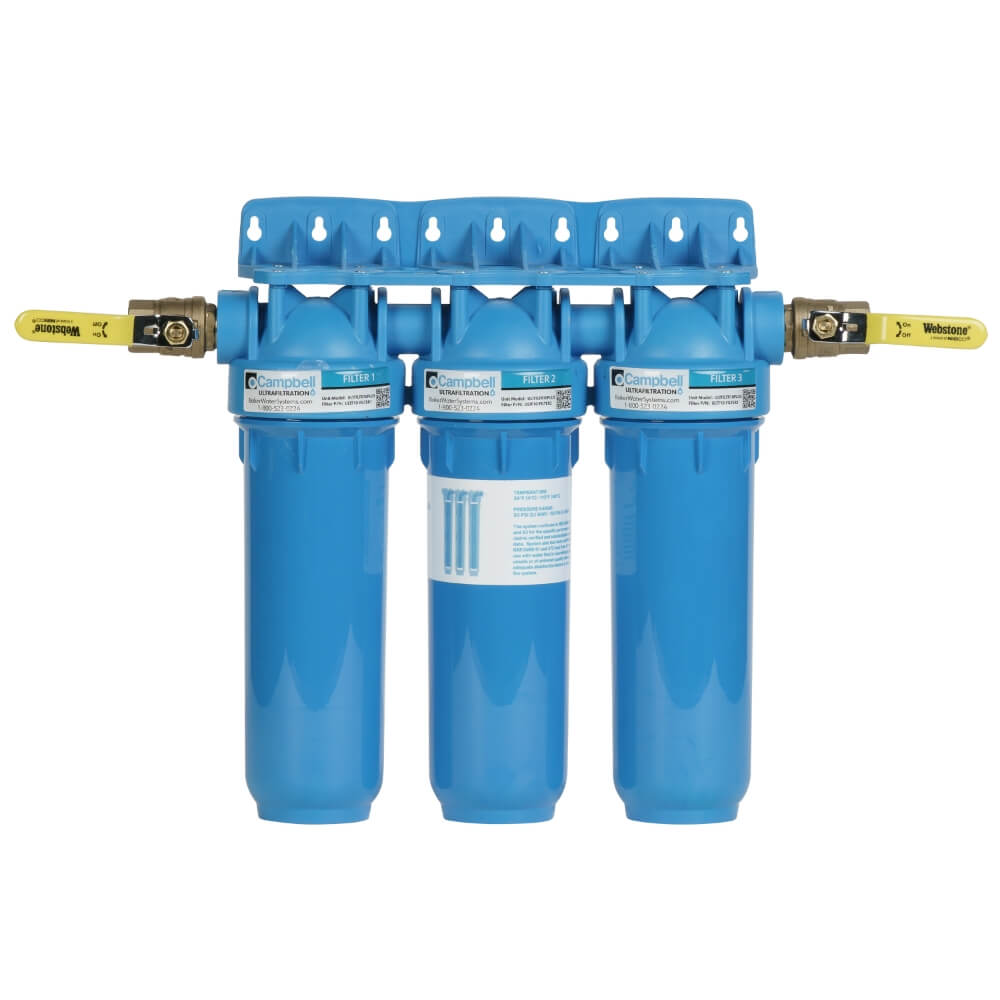
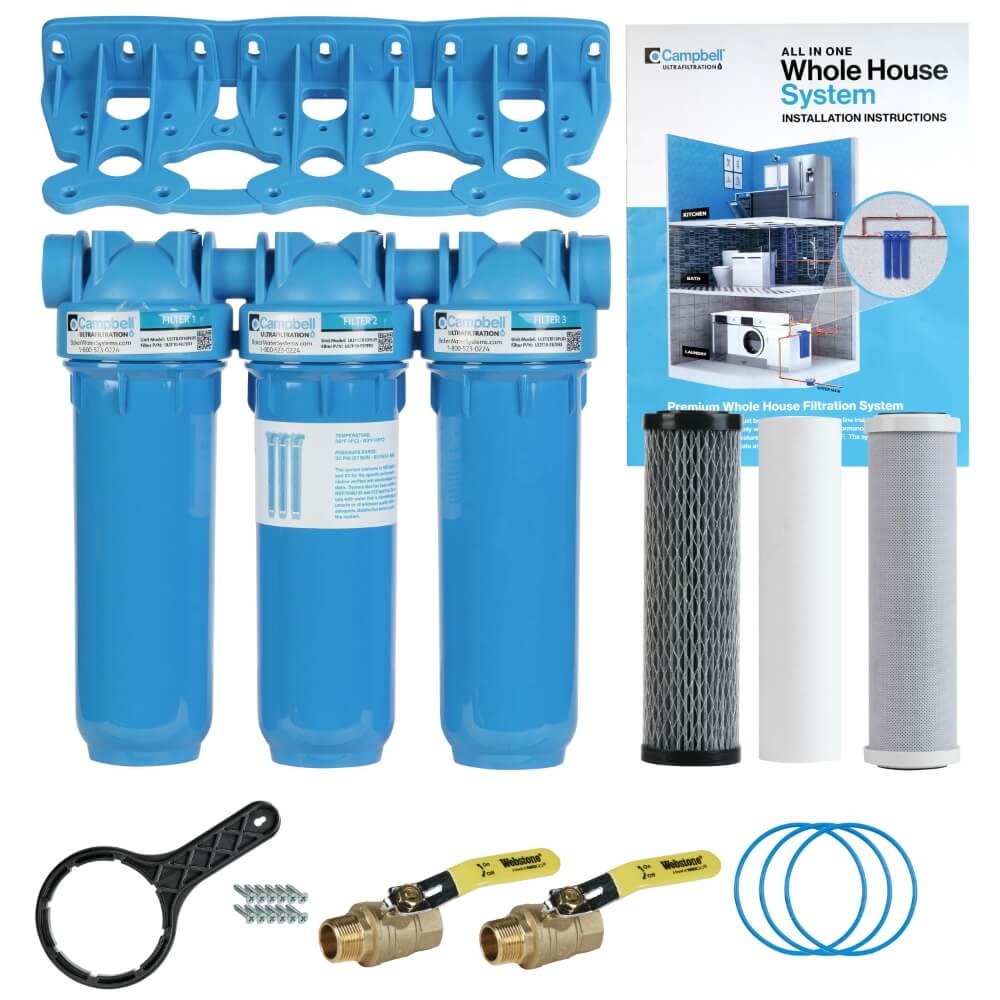
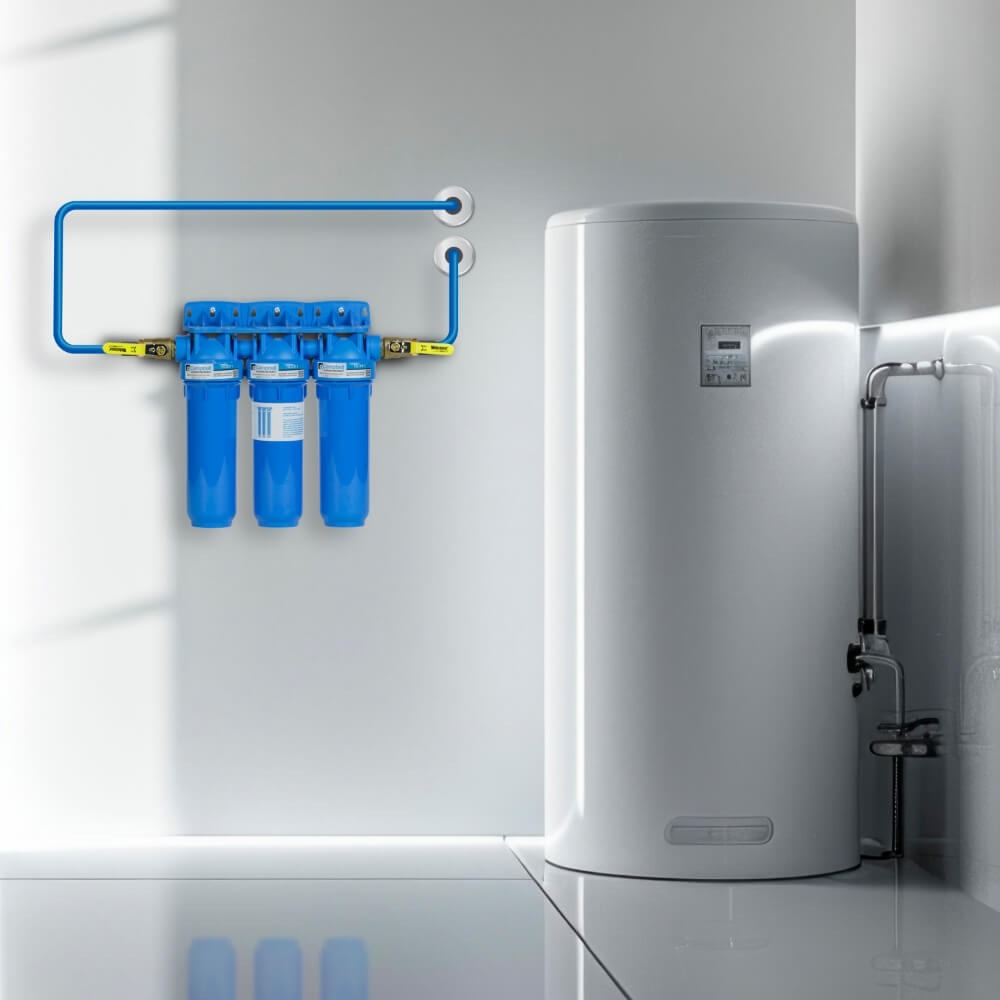
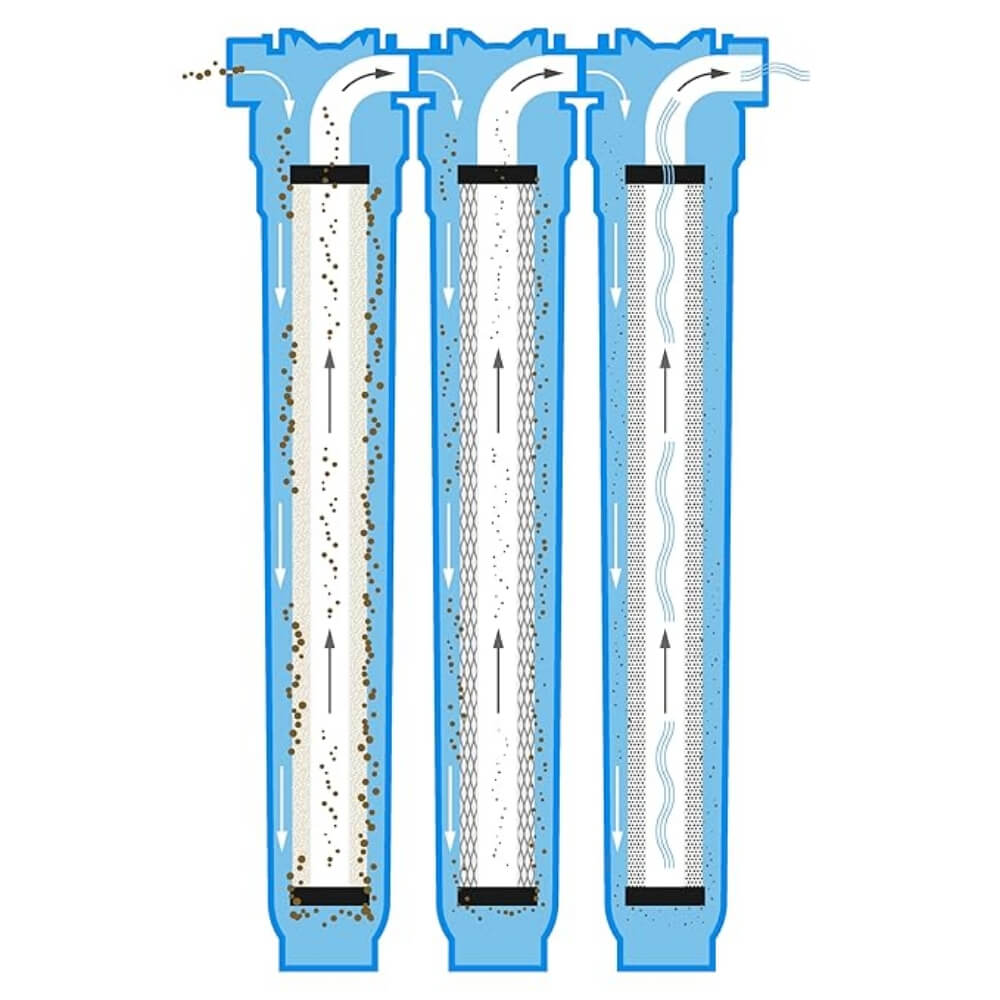
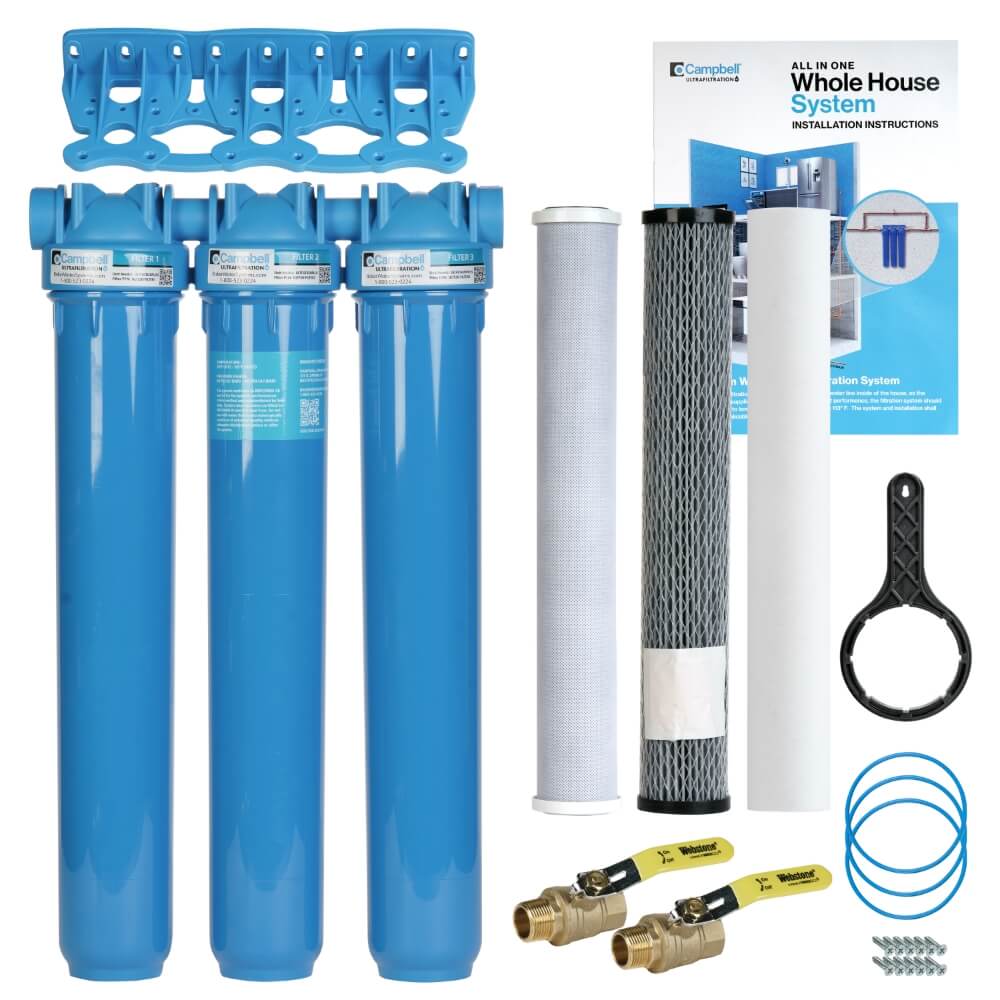
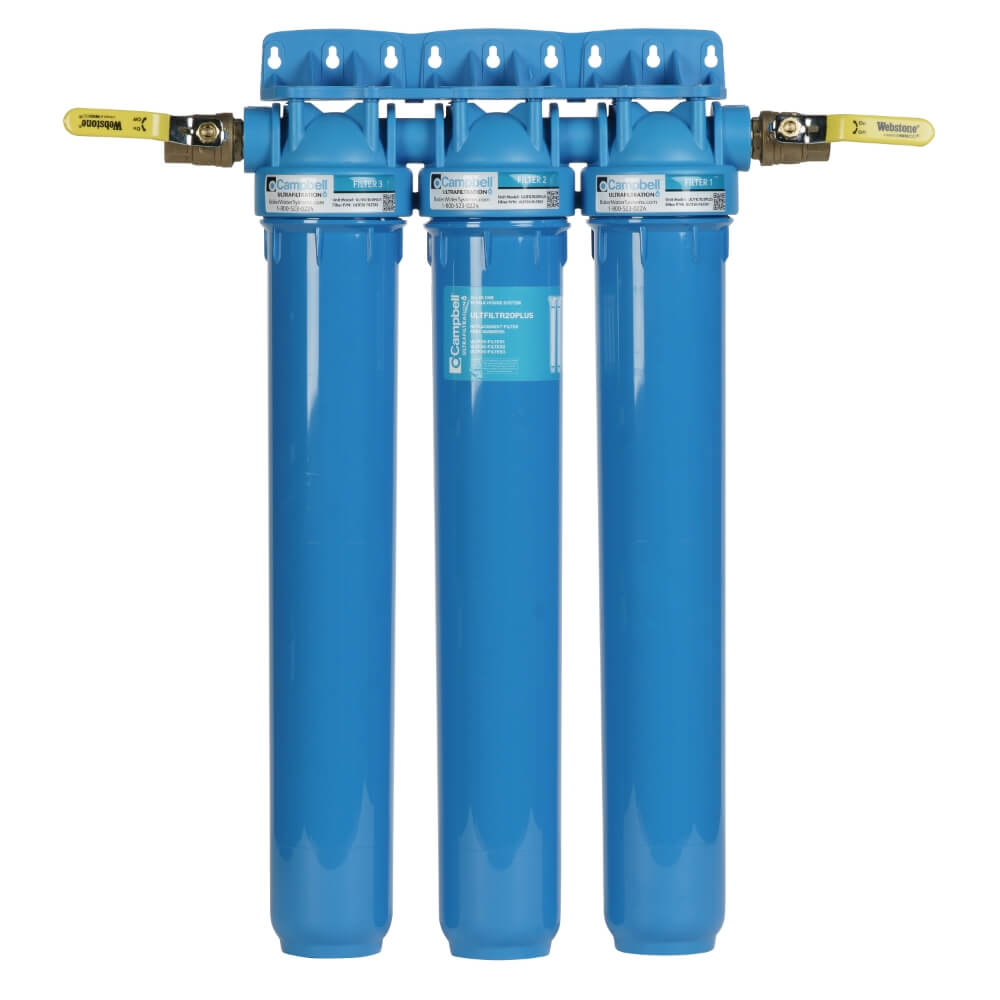
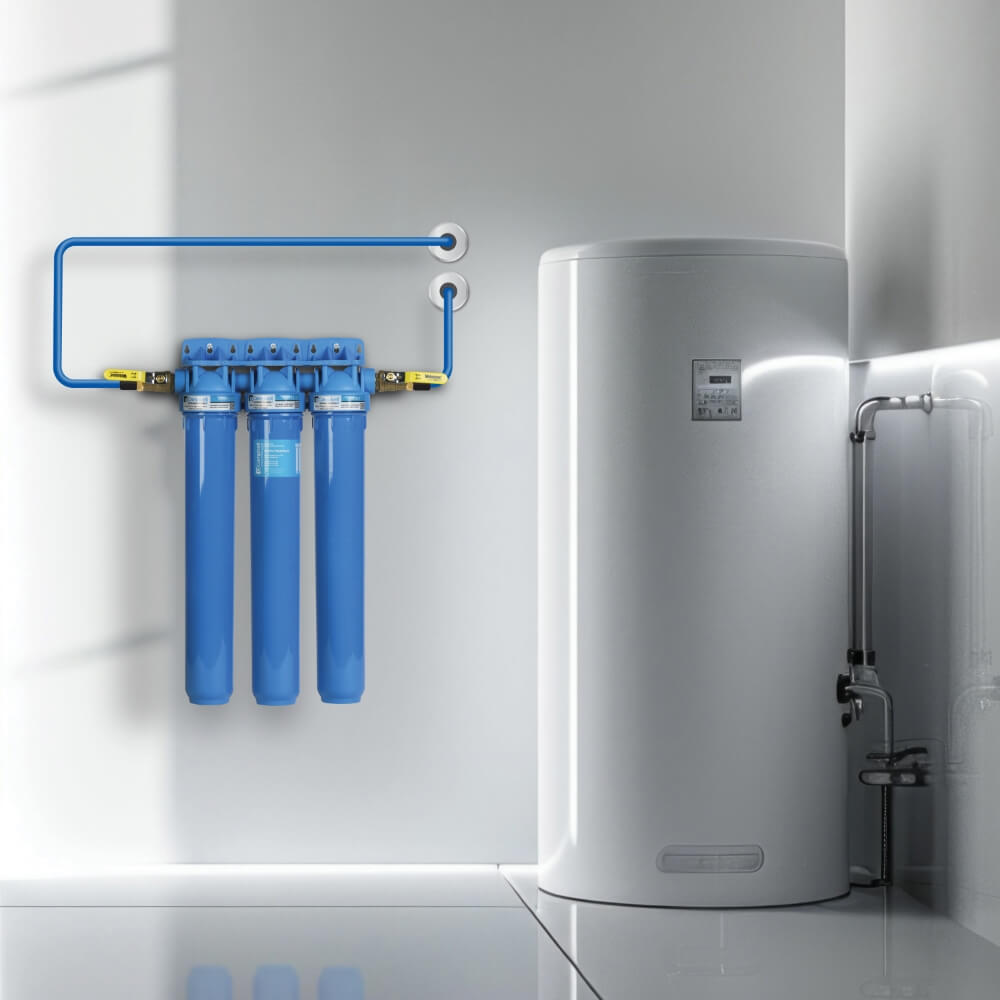
Reduces 99.99% Bacteria
Reduces 99.99% Viruses
Reduces 99.95% Cysts
Reduces 99% Total PFAS / Forever Chemicals
Reduces 85% of Heavy Metals (Lead, Copper, Iron)
Reduces Microplastics
Reduces 99.99% Bacteria
Reduces 99.99% Viruses
Reduces 99.95% Cysts
Reduces 99% Total PFAS / Forever Chemicals
Reduces 85% of Heavy Metals (Lead, Copper, Iron)
Reduces Microplastics
Whole House Filtration Capabilities
Extend the life of your appliances and plumbing from scale and buildup.
Enjoy safer, better-tasting, better-smelling water from every tap.
Enjoy safer, better-tasting, and better-smelling drinking water.
Extend the life of your appliances and plumbing from scale and buildup.
With less scale and particulate build up your home's dirtiest places are even easier to clean.
Reduces PFAS, bacteria, viruses, cysts, heavy metals and more while keeping calcium and magnesium - good minerals you need - in the water.
Filtered water can help improve the health of your skin and hair, reduce the risk of skin conditions, and keep contaminants at bay. All at a flow rate of 8+ GPM.
Reducing chlorine in the water protects fabric and preserves clothing color, all while extending the life of your washing machine.
Cutting-edge filtration technology for your entire home. Filtering out some of the most harmful chemicals found in water, our system gives you safer, better-tasting water without wastewater discharge or salt, while maintaining a flow rate of 8+ GPM.
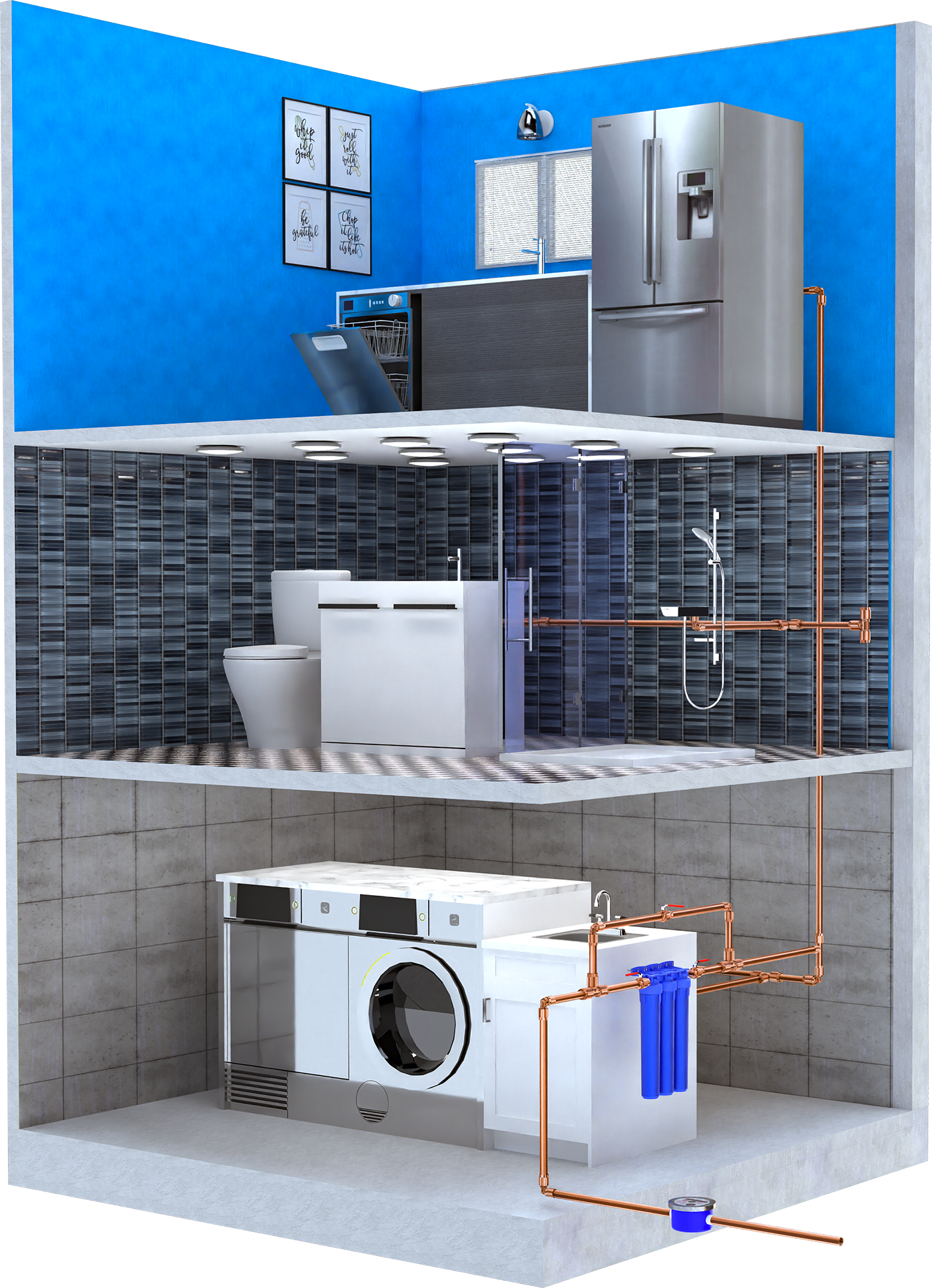

Maximum Protection for the Whole Family
Take your home’s water filtration to the next level. Originally developed in the medical and dental fields, our Ultrafiltration+ whole house water filter replacement system is in a class of its own. Our environmentally-friendly design produces no wastewater, allowing you to protect your family without a costly water bill.
What does it do?
Our small, (2.5”x 10” and 20” models) yet mighty systems bring cutting-edge filtration technology to your entire home. Designed and assembled in the USA, our system greatly reduces harmful contaminants without producing wastewater discharge.
The whole home system removes 99% of the six most harmful forever chemicals and meets the NSF/ANSI 53 2022 standard for PFAS/forever chemicals reduction at 20ppt. This system uses no salt and maintains a flow rate of 8+ GPM. Here's what it reduces:
- 99.99% of bacteria*
- 99.99% of viruses*
- 99.99% of spores
- 95% of cysts
- 99% of forever chemicals/PFAS
(PFOA, PFOS, PFHxS, PFNA, PFBS, and PFDA) - Over 85% of heavy metals (Lead, Copper, Iron)**
- Pharmaceuticals
- Microplastics
- Particulates
- Chlorine
- Scale
*Based on manufacturer's internal laboratory testing for QA control. **Based on third-party independent laboratory testing.
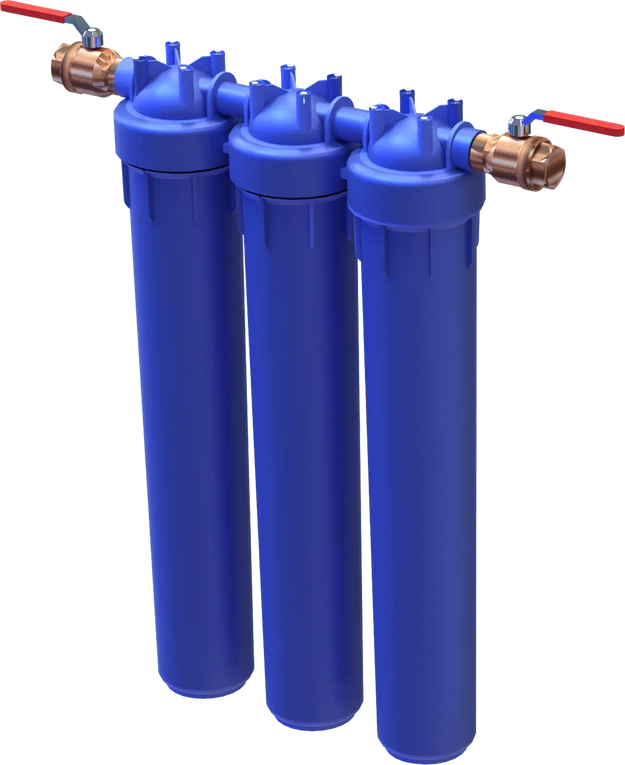
How does it work?
PARTICULATE & SCALE REDUCTION
Optimized dirt holding capacity traps large particulate. This cartridge also reduces scale.
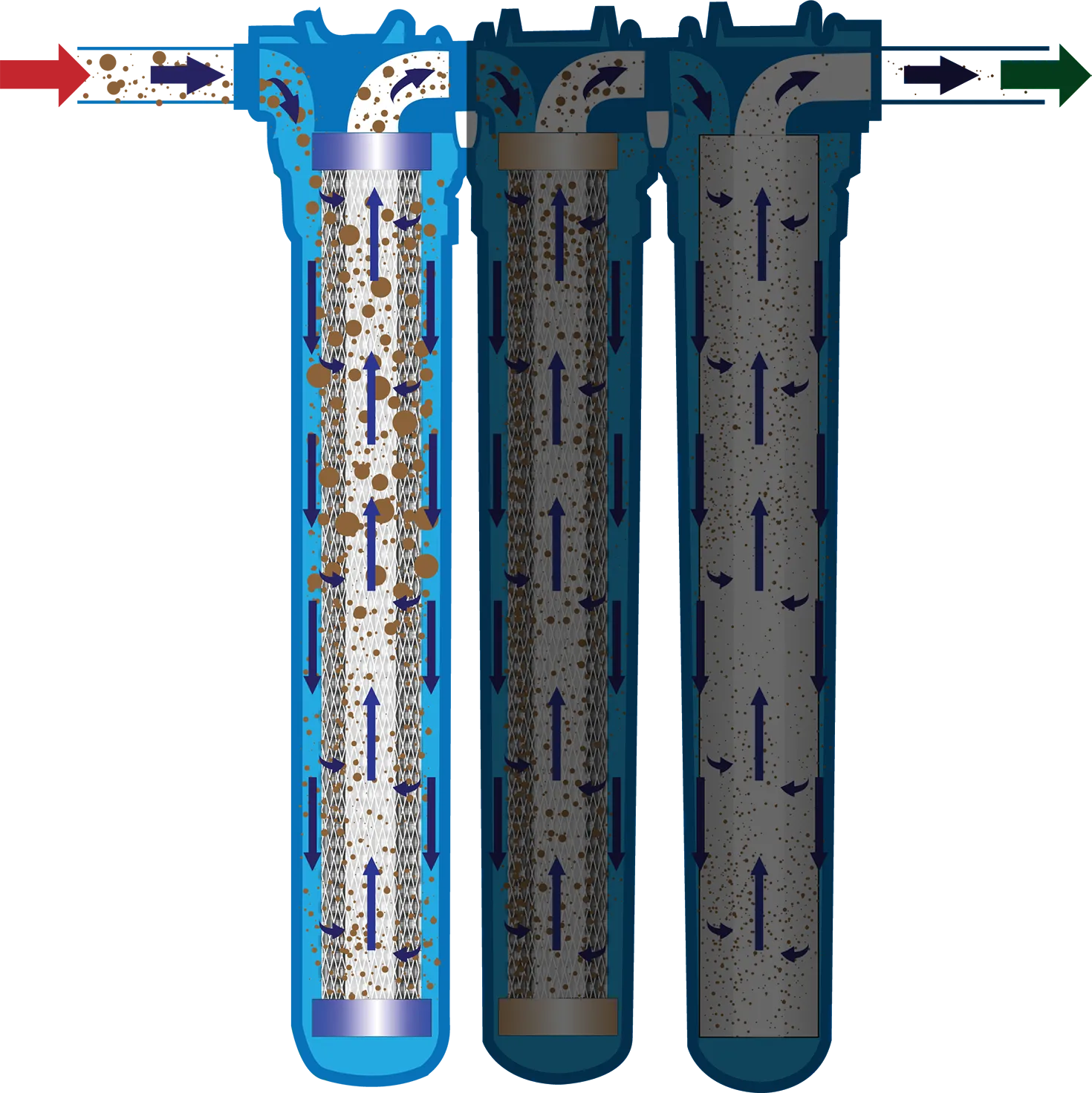
MICRONGUARD
Proprietary filter technology reduces bacteria, viruses, cysts, forever chemicals/PFAS, and heavy metal particulate.
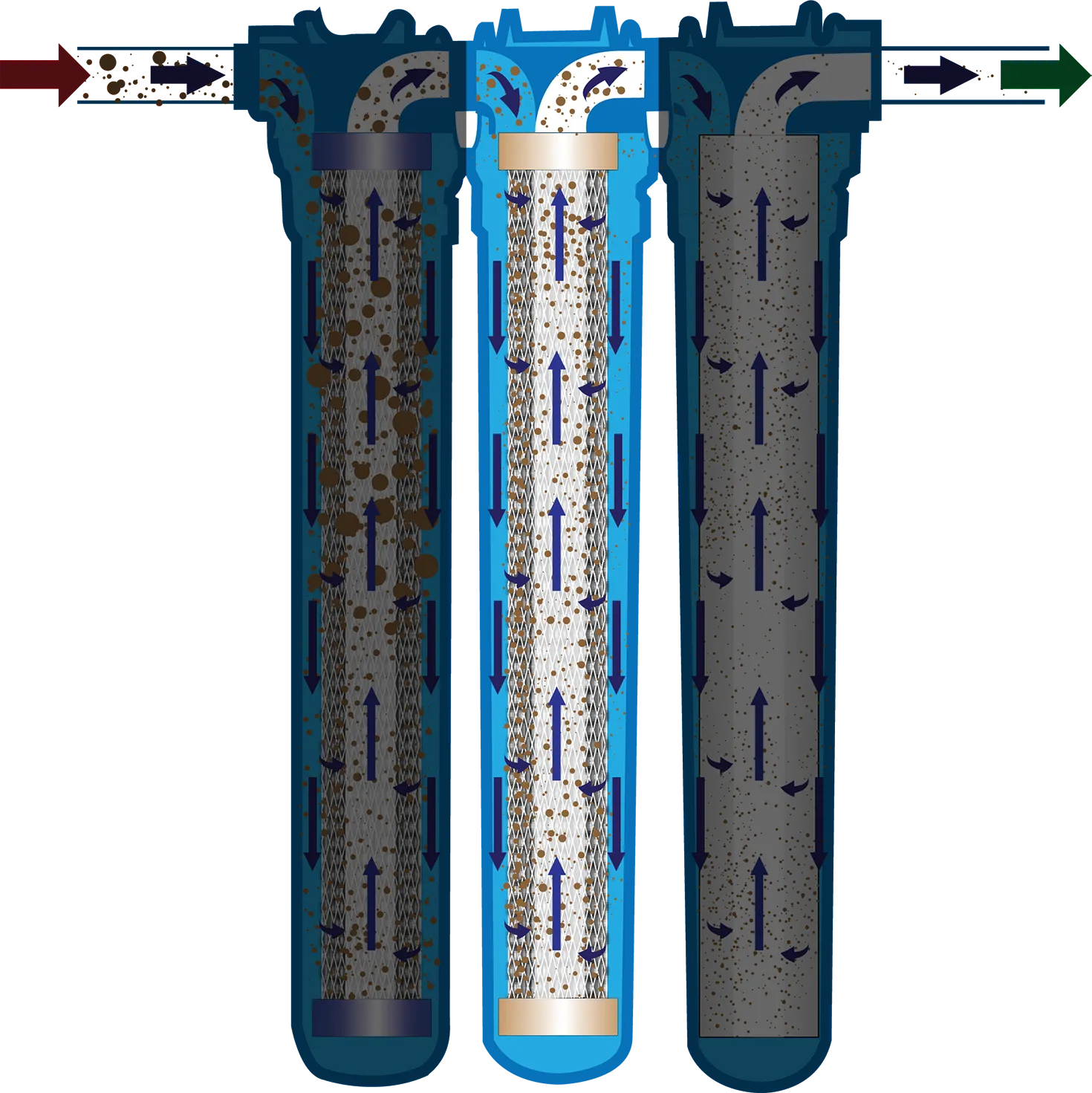
PFAS & CHLORINE REDUCTION
High capacity carbon block filter reduces chlorine, improves taste and odor, additional reduction of forever chemicals/PFAS, and other contaminants.
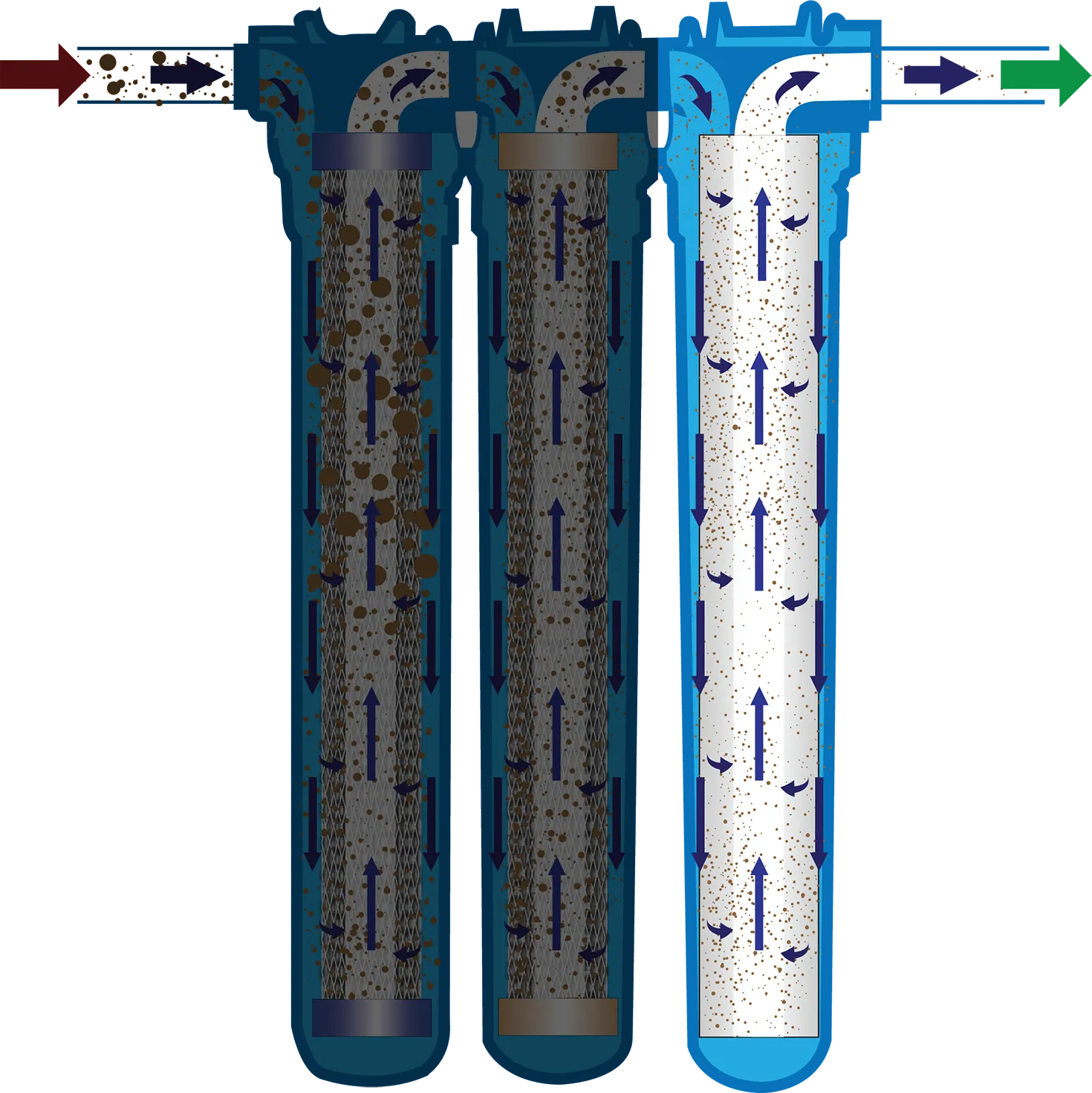
FAQ
PFAS (also referred to as "forever chemicals") are a group of manufactured chemicals that have been used in industry and consumer products since the 1940s because of their useful properties. There are thousands of different PFAS, some of which have been more widely used and studied than others.
Perfluorooctanoic Acid (PFOA) and Perfluorooctane Sulfonate (PFOS), for example, are two of the most widely used and studied chemicals in the PFAS group. PFOA and PFOS have been replaced in the United States with other PFAS in recent years.
One common characteristic of concern of PFAS is that many break down very slowly and can build up in people, animals, and the environment over time.
PFAS National Primary Drinking Water Regulation
On April 10, 2024, EPA announced the final National Primary Drinking Water Regulation (NPDWR) for six PFAS. To inform the final rule, EPA evaluated over 120,000 comments submitted by the public on the rule proposal, as well as considered input received during multiple consultations and stakeholder engagement activities held both prior to and following the proposed rule. EPA expects that over many years the final rule will prevent PFAS exposure in drinking water for approximately one hundred million people, prevent thousands of deaths, and reduce tens of thousands of serious PFAS-attributable illnesses.
EPA is also making unprecedented funding available to help ensure that all people have clean and safe water. $1 billion through the Bipartisan Infrastructure Law to help states and territories implement testing and treatment at public water systems and to help owners of private wells address PFAS contamination.
EPA finalized a National Primary Drinking Water Regulation (NPDWR) establishing legally enforceable levels, called Maximum Contaminant Levels (MCLs), for six PFAS in drinking water. PFOA, PFOS, PFHxS, PFNA, and HFPO-DA as contaminants with individual MCLs, and PFAS mixtures containing at least two or more of PFHxS, PFNA, HFPO-DA, and PFBS using a Hazard Index MCL to account for the combined and co-occurring levels of these PFAS in drinking water. EPA also finalized health-based, non-enforceable Maximum Contaminant Level Goals (MCLGs) for these PFAS.
The EPA has created a wealth of publicly available resources.
Toxicity
Studies indicate that exposure to PFAS over certain levels may result in adverse health effects, including developmental effects to fetuses during pregnancy or to breastfed infants (e.g., low birth weight, accelerated puberty, skeletal variations), cancer (e.g., testicular, kidney), liver effects (e.g., tissue damage), immune effects (e.g., antibody production and immunity), thyroid effects and other effects (e.g., cholesterol changes).
Is there PFAS contamination above the proposed limit in your area?
On April 10, 2024, EPA announced the final National Primary Drinking Water Regulation (NPDWR) for six PFAS (forever chemicals).
Campbell Ultrafiltration POE systems are certified by IAPMO to NSF/ANSI Standard 53, 2022 (20 ppt).
Comparison: EPA NPDWR to Ultrafiltration Certified Product Test Results
MirconGuard™enhances the filtration ability of the filter. The base media was developed for NASA space vehicles. Simply put, it uses nanotechnology to remove far smaller things from water than any filter alone would be capable of while maintaining a high flow rate.
No, magnesium and calcium will remain in your water supply.
The Campbell Ultrafiltration+ Whole House System should be installed by a licensed and bonded professional.
- Flow rate of 4.0 gpm
- Pressure range 30 psi - 60 psi
- Pressure drop 10.99 psi @ 4 gpm
- Temperature range 39°F (4°C) - 113°F (45°C)
- Rated capacity @ 6,000 gallons
- Designed and assembled in the USA
Performance Data Sheet
- Flow rate of 8.0 gpm
- Pressure range 30 psi - 60 psi
- Pressure drop 11.53 psi @ 8 gpm
- Temperature range 39°F (4°C) - 113°F (45°C)
- Rated capacity @ 12,000 gallons
- Designed and assembled in the USA
- Flow rate of 8.0 - 12.0 gpm
- Pressure range 30 psi - 60 psi
- Temperature range 39°F
(4°C) - 113°F (45°C) - Estimated Rated Capacity @ 8 gpm = 30,000
gallons - Estimated Rated Capacity @ 10 gpm = 24,000
gallons - Estimated Rated Capacity @ 12 gpm = 20,000
gallons
Certified by IAPMO R&T to ANSI/NSF:
- Standard 42 - Drinking Water Treatment Unit – Aesthetic Effects: Particulate,Chlorine, Scale
- Standard 53 - Water Treatment Product – Health Effects: PFAS @ 20 ppt (NSF/ANSI 2022 standard testing)
- Standard 61 - Drinking Water System Components – Health Effects
- Standard 372 - Lead Free Water Filtration Product
California Water Boards Registered Residential Water Treatment Devices
Filter 2, MicronGuard is 3rd party lab tested for bacteria, virus, cysts
For the ULTFILTR20PLUS the filters should be changed out every 12,000 gallons. For the ULTFILTR10PLUS the filters should be changed out every 6,000 gallons. See your product’s sheet for more specific replacement details.
No, the Campbell Ultrafiltration+ Whole House filtration system does not produce any wastewater! This is a major advantage over traditional reverse osmosis (RO) systems, which can use up to 75% of incoming water in the filtration process. Other filtration systems may require flushing to remove contaminants or generate wastewater as a byproduct.
The filtration technology used in our system captures contaminants allowing filtered water to pass through. The high capacity filters make this possible without a significant reduction in flow rate. This approach eliminates the need for wastewater disposal, making our systems more environmentally friendly, efficient, and less disruptive to install.
- Our system is a closed loop. No water used to generate filtered water.
- By not necessitating a connection to wastewater disposal, installation is minimally disruptive to your home.
- More drinking water for your money! All of the incoming water is filtered, and you get to use every drop you pay for.
By choosing a water filtration system that doesn't produce wastewater, you're making a smart choice for your wallet and the environment.















